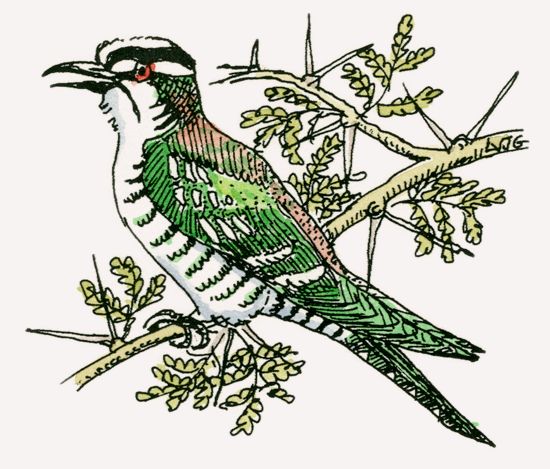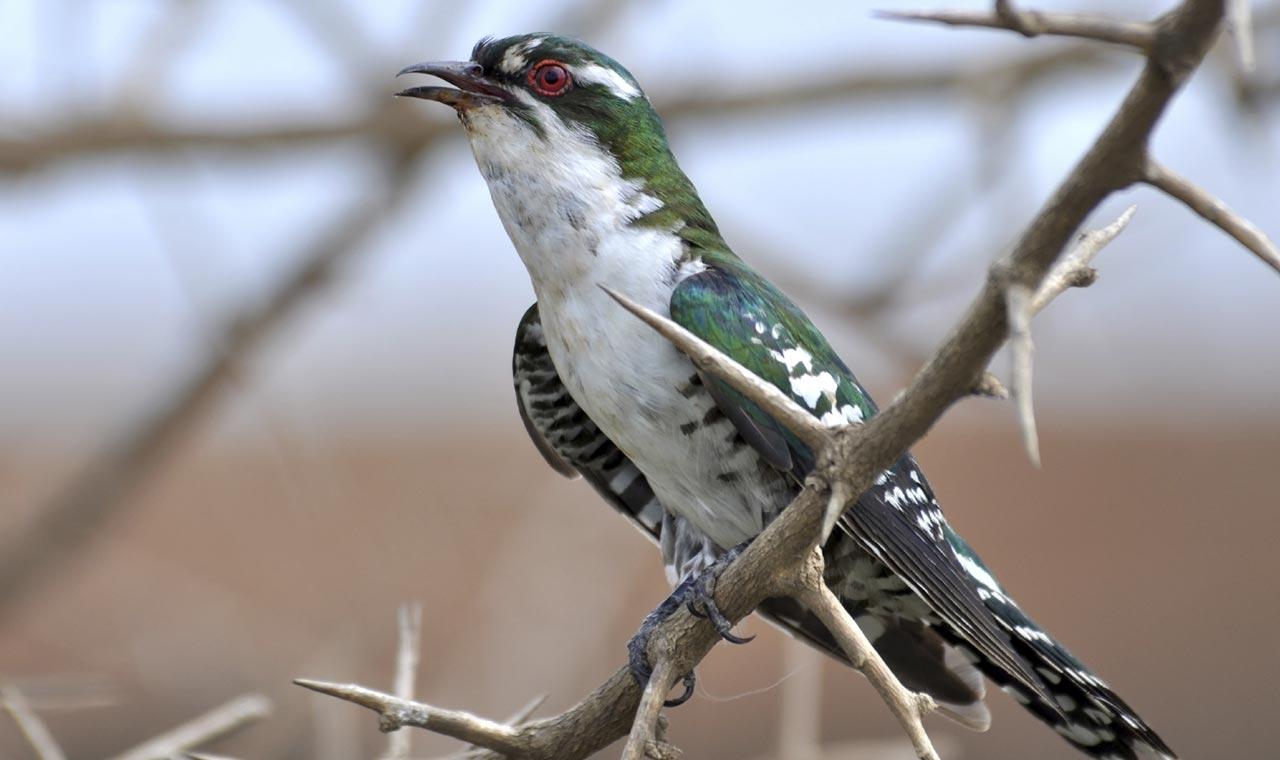Communication
The Diederik cuckoo sings its name—dee-dee-dee-dee-derik—in a loud voice.
Behavior
Diederik cuckoos are intra-African migrants whose movements are dependent on the arrival of rain.
Conservation
The population of the Diederik cuckoo appears to be expanding in some parts of its range. It is listed as lower risk by the International Union for Conservation of Nature (IUCN).
Diet
The favorite food of Diederik’s cuckoos is the hairy caterpillar, although they also consume other invertebrates.
Breeding
After sighting a female in his territory, a male Diederik cuckoo courts her with song and hairy caterpillars. After mating, she leaves him, lays a single egg in an alien nest, and flies off, leaving the “foster” parents to hatch and raise her offspring. She may lay as many as 20 to 24 eggs in as many different nests during the breeding season.
Friends & Foes
The Dierderik cuckoo usually chooses the nests of weaver birds to place eggs for foster-parent incubating. Deposited eggs look like the eggs of whatever host bird the female cuckoo selects.
Population in Kenya
Diederik cuckoos are found throughout Kenya in wooded grassland, dry acacia scrub, parks, gardens, and farmers’ fields at elevations ranging from sea level to 7,200 feet (2,200 m).
Range & Habitat
Diederik cuckoos inhabit all of southern Africa except for arid desert areas along Namibia’s coast.



